Elías F. Combarro
Quantum Computing for Large-scale Network Optimization: Opportunities and Challenges
Sep 09, 2025Abstract:The complexity of large-scale 6G-and-beyond networks demands innovative approaches for multi-objective optimization over vast search spaces, a task often intractable. Quantum computing (QC) emerges as a promising technology for efficient large-scale optimization. We present our vision of leveraging QC to tackle key classes of problems in future mobile networks. By analyzing and identifying common features, particularly their graph-centric representation, we propose a unified strategy involving QC algorithms. Specifically, we outline a methodology for optimization using quantum annealing as well as quantum reinforcement learning. Additionally, we discuss the main challenges that QC algorithms and hardware must overcome to effectively optimize future networks.
Running the Dual-PQC GAN on noisy simulators and real quantum hardware
May 30, 2022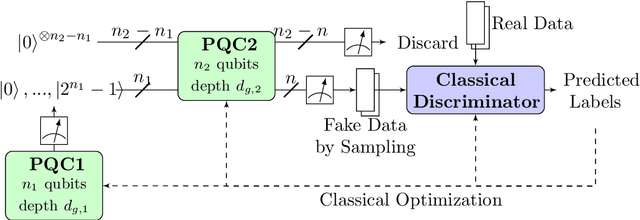



Abstract:In an earlier work, we introduced dual-Parameterized Quantum Circuit (PQC) Generative Adversarial Networks (GAN), an advanced prototype of a quantum GAN. We applied the model on a realistic High-Energy Physics (HEP) use case: the exact theoretical simulation of a calorimeter response with a reduced problem size. This paper explores the dual- PQC GAN for a more practical usage by testing its performance in the presence of different types of quantum noise, which are the major obstacles to overcome for successful deployment using near-term quantum devices. The results propose the possibility of running the model on current real hardware, but improvements are still required in some areas.
Higgs analysis with quantum classifiers
Apr 15, 2021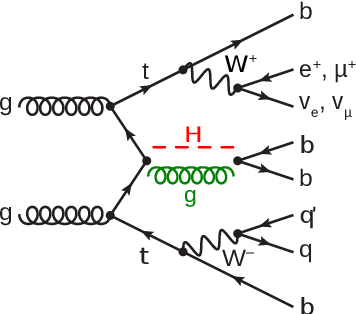
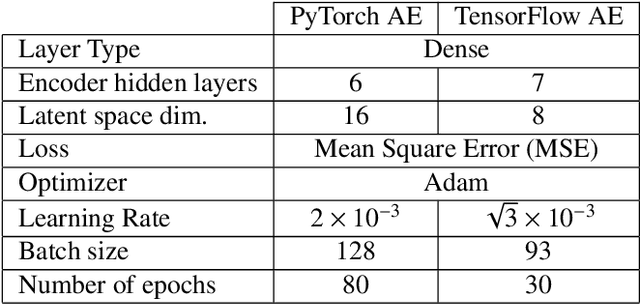
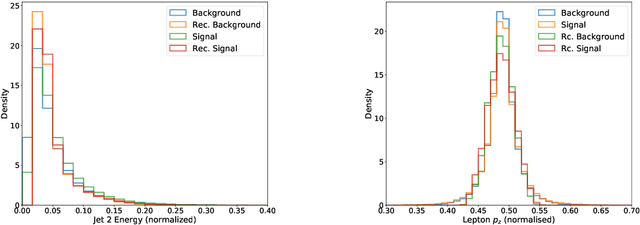

Abstract:We have developed two quantum classifier models for the $t\bar{t}H(b\bar{b})$ classification problem, both of which fall into the category of hybrid quantum-classical algorithms for Noisy Intermediate Scale Quantum devices (NISQ). Our results, along with other studies, serve as a proof of concept that Quantum Machine Learning (QML) methods can have similar or better performance, in specific cases of low number of training samples, with respect to conventional ML methods even with a limited number of qubits available in current hardware. To utilise algorithms with a low number of qubits -- to accommodate for limitations in both simulation hardware and real quantum hardware -- we investigated different feature reduction methods. Their impact on the performance of both the classical and quantum models was assessed. We addressed different implementations of two QML models, representative of the two main approaches to supervised quantum machine learning today: a Quantum Support Vector Machine (QSVM), a kernel-based method, and a Variational Quantum Circuit (VQC), a variational approach.
Dual-Parameterized Quantum Circuit GAN Model in High Energy Physics
Mar 29, 2021

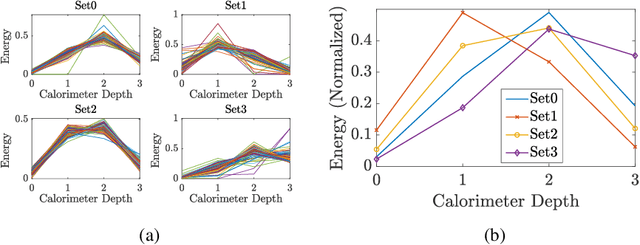
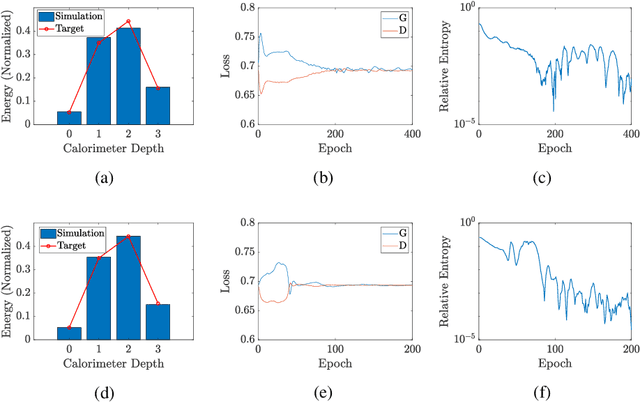
Abstract:Generative models, and Generative Adversarial Networks (GAN) in particular, are being studied as possible alternatives to Monte Carlo simulations. It has been proposed that, in certain circumstances, simulation using GANs can be sped-up by using quantum GANs (qGANs). We present a new design of qGAN, the dual-Parameterized Quantum Circuit(PQC) GAN, which consists of a classical discriminator and two quantum generators which take the form of PQCs. The first PQC learns a probability distribution over N-pixel images, while the second generates normalized pixel intensities of an individual image for each PQC input. With a view to HEP applications, we evaluated the dual-PQC architecture on the task of imitating calorimeter outputs, translated into pixelated images. The results demonstrate that the model can reproduce a fixed number of images with a reduced size as well as their probability distribution and we anticipate it should allow us to scale up to real calorimeter outputs.
Quantum Generative Adversarial Networks in a Continuous-Variable Architecture to Simulate High Energy Physics Detectors
Jan 26, 2021
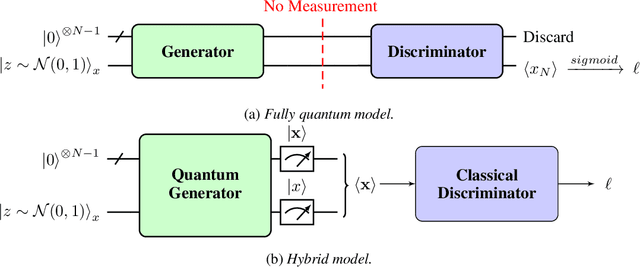
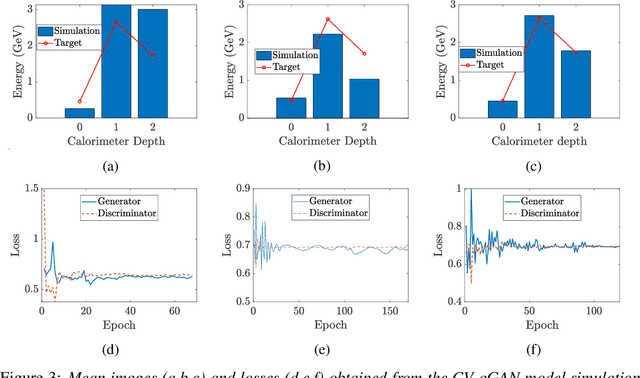
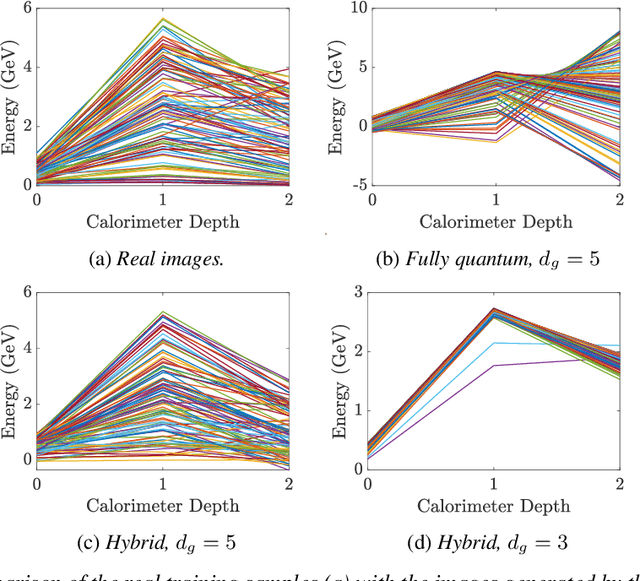
Abstract:Deep Neural Networks (DNNs) come into the limelight in High Energy Physics (HEP) in order to manipulate the increasing amount of data encountered in the next generation of accelerators. Recently, the HEP community has suggested Generative Adversarial Networks (GANs) to replace traditional time-consuming Geant4 simulations based on the Monte Carlo method. In parallel with advances in deep learning, intriguing studies have been conducted in the last decade on quantum computing, including the Quantum GAN model suggested by IBM. However, this model is limited in learning a probability distribution over discrete variables, while we initially aim to reproduce a distribution over continuous variables in HEP. We introduce and analyze a new prototype of quantum GAN (qGAN) employed in continuous-variable (CV) quantum computing, which encodes quantum information in a continuous physical observable. Two CV qGAN models with a quantum and a classical discriminator have been tested to reproduce calorimeter outputs in a reduced size, and their advantages and limitations are discussed.
 Add to Chrome
Add to Chrome Add to Firefox
Add to Firefox Add to Edge
Add to Edge